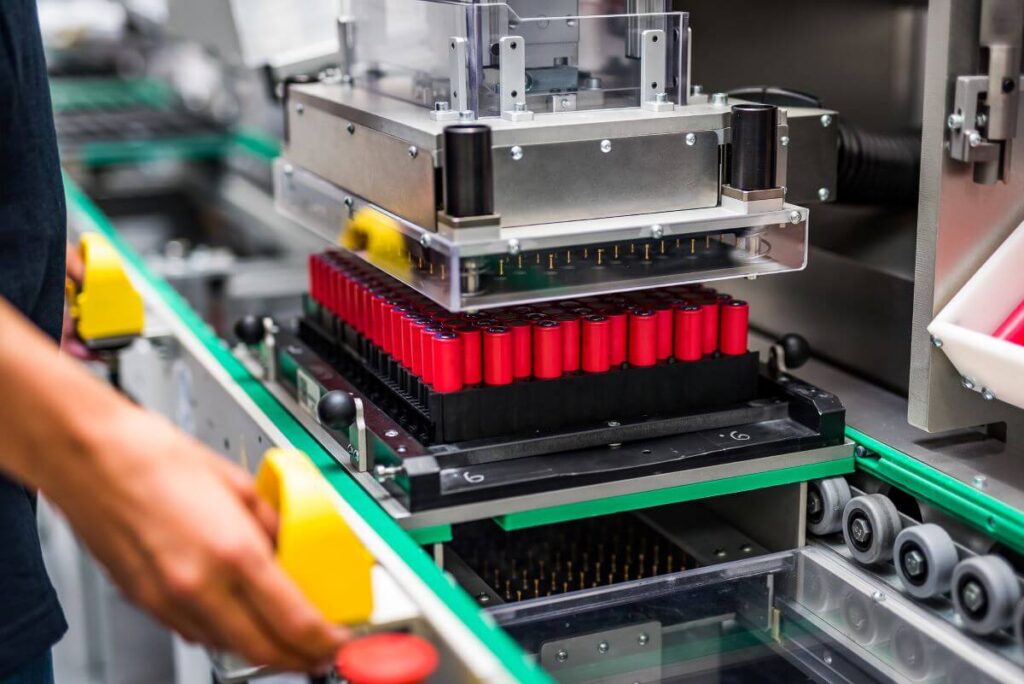How do lithium-ion batteries work? The mechanisms behind their functionality involve the movement of ions between electrodes housed inside the battery. Check out!
Table of Contents:
Key Takeaways:
-
High Energy Density: Lithium-ion batteries store a significant amount of energy relative to their weight, making them efficient for portable applications.
-
Rechargeability: These batteries can be charged and discharged numerous times, offering long-term usability.
-
Lightweight Design: The materials used contribute to a lighter battery, beneficial for mobile devices and electric vehicles.
-
Safety Features: Modern lithium-ion batteries include safety mechanisms to prevent overheating and short circuits.
-
Environmental Impact: While lithium-ion batteries are more environmentally friendly than some alternatives, recycling and disposal require careful consideration to mitigate environmental impact.
How do lithium-ion batteries work? The mechanisms behind their functionality involve the movement of ions between electrodes housed inside the battery. The cathode and anode – two electrodes of opposite charges – facilitate the flow of electrons through the external circuit during the charge and discharge cycles of the device. This movement of electrons is what powers the device. For a full breakdown of how a lithium-ion battery works, read the rest of the article below.
How Lithium-Ion batteries work – Anatomy of a Cell
Lithium-ion batteries are perhaps one of the key inventions of the modern era. Their scalability and rechargeability offer largely unmatched energy efficiency at a relatively low cost. For how much they make our daily lives easier, we definitely take their presence and functionality for granted without really understanding the chemistry behind lithium-ion batteries.
So, how does a lithium-ion battery work, exactly? To answer this question, we need to take a closer look at the composition of such batteries.
Four main components comprise a lithium-ion battery cell:
- Cathode: The positive electrode, usually constructed out of a lithium oxide material, like lithium cobalt oxide or lithium manganese oxide. It is the source of lithium ions that flow between itself and its negative counterpart.
- Anode: The negative electrode, usually made out of graphite. During discharge (i.e., when the battery powers a device), the lithium ions flow from the cathode to the anode and get stored there.
- Electrolyte: A medium that facilitates the movement of ions between the two electrodes.
- Separator: A non-reactive material physically separating the anode and cathode that still allows for the movement of lithium ions between the two sides.
Of course, modern lithium-ion batteries have evolved rather significantly from the first prototypes invented in the 1970s and 80s. Nowadays, they are furnished with extra short-circuit protection and other safety mechanisms to protect them against overheating, for example. Single cell is not sufficient for all of applications. For optimal use, they are clustered together in complex battery management systems – powerful control units that store and operate hundreds if not thousands of individual cells.
Technological advancements aside, the basic list above describes the structure of essentially every lithium-ion battery system out there. In the next section, we explain the inner workings of these batteries step-by-step.
Step-By-Step process of Lithium-Ion battery operation
As we said, the science behind this process, although simple, follows a precise sequence of events and steps that ultimately allow the battery to effectively transfer current from inside the battery cell to the receiving device. Let’s take a closer look at each of these steps now:
- Battery empty: When the battery is empty, it means the lithium ions stored in the anode have all moved to the cathode. The battery cells can no longer provide any energy to the external circuit, i.e. the device being powered.
- Charging phase: Once current is applied, a chemical reaction causes the lithium ions stored inside of the cathode to flow across the electrolyte medium back to the anode. During this process, electrons are also transferred to the anode.
- Battery full: Once all the free lithium ions have been extracted from the cathode and filled the anode, the battery is at 100% charge.
- Discharging phase: The cycle repeats in the opposite direction once the external circuit starts drawing power from the battery. The lithium ions are released once again, causing electrons to begin flowing through the circuit, powering the device in the process.
The Takeaway
If you needed to know how lithium-ion batteries work, hopefully, now you do. Though this was just a rudimentary breakdown explained in layman terms, becoming familiar with the technology, even at a basic level, can help you develop an appreciation for the engineering and science behind what powers devices you likely use every single day.
You may also read: How Do Battery Management Systems Work?
What are the main components of a lithium-ion battery?
How do lithium-ion batteries generate electrical energy?
What happens during the charging process?
What is the role of the separator in a lithium-ion battery?
Why are lithium-ion batteries preferred in modern applications?
About the Author
EMBS
Leading manufacturer of advanced battery systems with a market presence of over 25 years. We specialise in rechargeable lithium-ion batteries, producing a wide range of systems with varying power and capacity.
